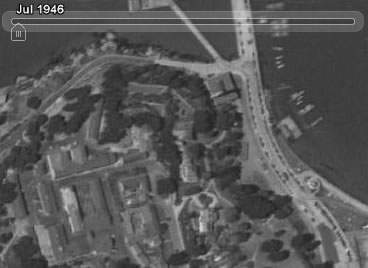
Visible aquatic plants or suspicious submerged objects were digitized and converted to ESRI shapefiles and grids.


This study utilized Google Earth historical images between 20 along a section of Ohio River known as the Racine Pool and examined and recorded the appearances of aquatic plants. River systems are dynamic, coupled with similarities between spectral reflectance from submerged plants and background water bodies, limited success was reported from literature regarding the use of remote sensing with selected images on detecting aquatic plants. Field work played a significant role in such identification and removal, but at great expense on labor and time. Fish and Wildlife Service and the Ohio River Valley Water Sanitation Commission had put significant amounts of effort toward identifying and removing aquatic invasive plants along the Ohio River shorelines.

Major water bodies in US had experienced such impacts. Aquatic invasive plants are well known for causing severe impacts to local ecosystems, such as degrading water quality, decreasing biodiversity, consuming natural resources, among other impacts.


 0 kommentar(er)
0 kommentar(er)
